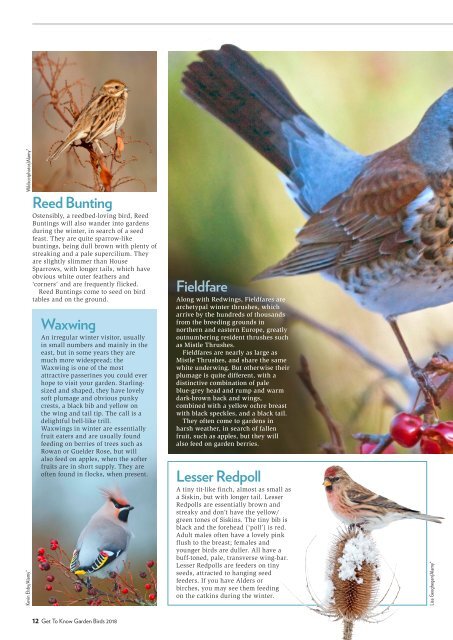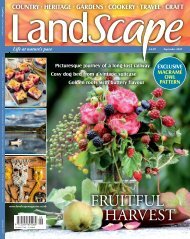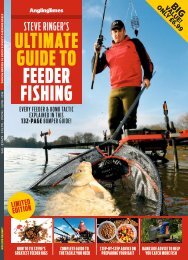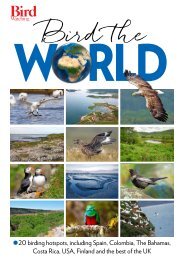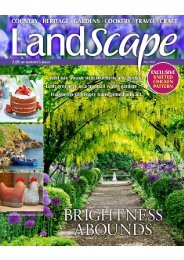You also want an ePaper? Increase the reach of your titles
YUMPU automatically turns print PDFs into web optimized ePapers that Google loves.
Wildscotphotos/Alamy*<br />
Kevin Elsby/Alamy*<br />
Reed Bunting<br />
Ostensibly, a reedbed-loving bird, Reed<br />
Buntings will also wander into gardens<br />
during the winter, in search of a seed<br />
feast. They are quite sparrow-like<br />
buntings, being dull brown with plenty of<br />
streaking and a pale supercilium. They<br />
are slightly slimmer than House<br />
Sparrows, with longer tails, which have<br />
obvious white outer feathers and<br />
‘corners’ and are frequently flicked.<br />
Reed Buntings come to seed on bird<br />
tables and on the ground.<br />
Waxwing<br />
An irregular winter visitor, usually<br />
in small numbers and mainly in the<br />
east, but in some years they are<br />
much more widespread; the<br />
Waxwing is one of the most<br />
attractive passerines you could ever<br />
hope to visit your garden. Starlingsized<br />
and shaped, they have lovely<br />
soft plumage and obvious punky<br />
crests, a black bib and yellow on<br />
the wing and tail tip. The call is a<br />
delightful bell-like trill.<br />
Waxwings in winter are essentially<br />
fruit eaters and are usually found<br />
feeding on berries of trees such as<br />
Rowan or Guelder Rose, but will<br />
also feed on apples, when the softer<br />
fruits are in short supply. They are<br />
often found in flocks, when present.<br />
Fieldfare<br />
Along with Redwings, Fieldfares are<br />
archetypal winter thrushes, which<br />
arrive by the hundreds of thousands<br />
from the breeding grounds in<br />
northern and eastern Europe, greatly<br />
outnumbering resident thrushes such<br />
as Mistle Thrushes.<br />
Fieldfares are nearly as large as<br />
Mistle Thrushes, and share the same<br />
white underwing. But otherwise their<br />
plumage is quite different, with a<br />
distinctive combination of pale<br />
blue-grey head and rump and warm<br />
dark-brown back and wings,<br />
combined with a yellow ochre breast<br />
with black speckles, and a black tail.<br />
They often come to gardens in<br />
harsh weather, in search of fallen<br />
fruit, such as apples, but they will<br />
also feed on garden berries.<br />
Lesser Redpoll<br />
A tiny tit-like finch, almost as small as<br />
a Siskin, but with longer tail. Lesser<br />
Redpolls are essentially brown and<br />
streaky and don’t have the yellow/<br />
green tones of Siskins. The tiny bib is<br />
black and the forehead (‘poll’) is red.<br />
Adult males often have a lovely pink<br />
flush to the breast; females and<br />
younger birds are duller. All have a<br />
buff-toned, pale, transverse wing-bar.<br />
Lesser Redpolls are feeders on tiny<br />
seeds, attracted to hanging seed<br />
feeders. If you have Alders or<br />
birches, you may see them feeding<br />
on the catkins during the winter.<br />
Lisa Geoghegan/Alamy*<br />
12 Get To Know Garden Birds 2018


